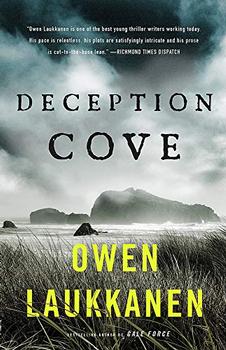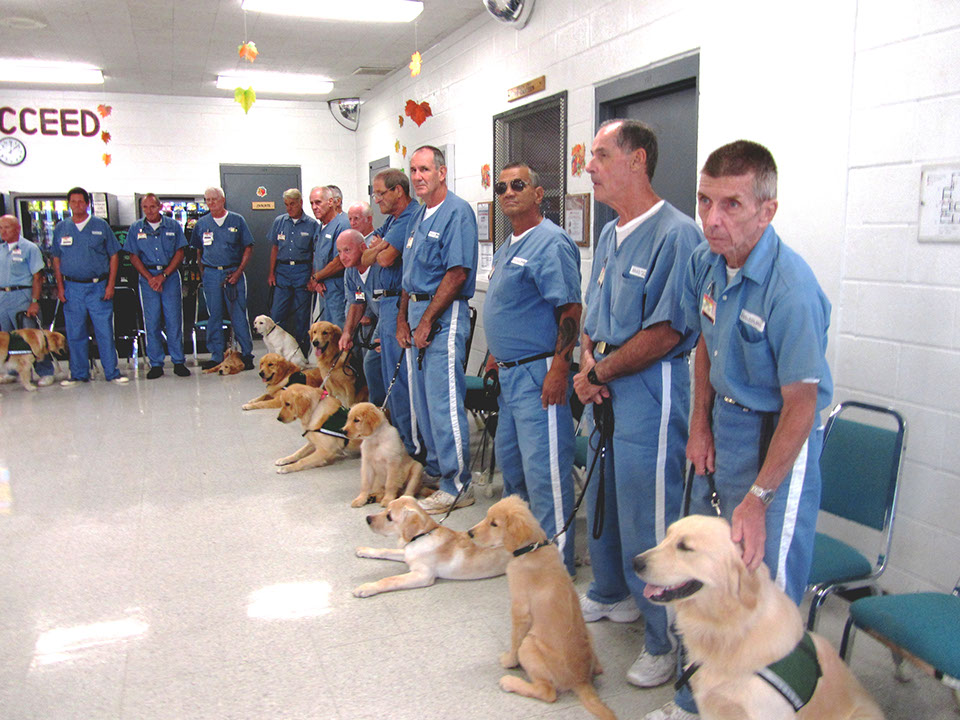Summary | Excerpt | Reviews | Beyond the Book | Read-Alikes | Genres & Themes | Author Bio

Critics' Opinion:
Readers' Opinion:
First Published:
May 2019, 384 pages
Paperback:
May 2020, 384 pages
 Book Reviewed by:
Book Reviewed by:
Jordan Lynch
Buy This Book
This article relates to Deception Cove
 In Owen Laukkanen's thriller Deception Cove, protagonist Mason Burke participated in a prison dog training program that brought meaning to his life during his incarceration. The origin of these programs can be traced back to a 1925 Boston Daily Globe news item. This article claimed that Pep, a Labrador owned by Governor Gifford Pinchot of Pennsylvania, was accused of murdering the governor's cat, and sentenced to life in the Eastern State Penitentiary in Philadelphia for his crimes. Despite the apparent drama of the case, however, the governor's wife Cornelia shared the truth in a later interview with the New York Times: Pep was innocent, and his incarceration was actually an attempt to help boost inmate morale by providing a canine companion.
In Owen Laukkanen's thriller Deception Cove, protagonist Mason Burke participated in a prison dog training program that brought meaning to his life during his incarceration. The origin of these programs can be traced back to a 1925 Boston Daily Globe news item. This article claimed that Pep, a Labrador owned by Governor Gifford Pinchot of Pennsylvania, was accused of murdering the governor's cat, and sentenced to life in the Eastern State Penitentiary in Philadelphia for his crimes. Despite the apparent drama of the case, however, the governor's wife Cornelia shared the truth in a later interview with the New York Times: Pep was innocent, and his incarceration was actually an attempt to help boost inmate morale by providing a canine companion.
It would be another 56 years before the first official canine program for prison rehabilitation was formed. In 1981, Dominican Sister Pauline Quinn began Pathways to Hope at the Washington State Corrections Center for Women, hoping to provide the incarcerated women with the same canine-inspired love and happiness that Quinn herself had experienced during her time as a runaway living on the streets. Over the next three decades, Quinn's philosophy would grow and expand until by 2016, there were more than 290 correctional facilities across the United States with some form of structured dog and inmate interaction.
Although Quinn's initial desire was to provide inmates with a companion that could bring healing and joy, these interactions have since gained another, more functional purpose.
In today's prison dog training programs, inmates are given puppies to train and care for in order to make the dog more adoptable or to prepare the dog for further development as a service/companion animal. Most of these dogs are rescued from high-kill shelters, and many have had traumatic experiences that make them less desirable for adoption. It's part of the inmate's job to train the dog in basic obedience, as well as in socialization to help it overcome any behavioral issues that may be related to past abuse or neglect. The inmates are also responsible for feeding, grooming and housebreaking their dogs, and in some programs, the dogs and inmates spend all their time together, meaning that the dog even sleeps in the cell with their partner.
Not just any prisoner can sign up. Inmates chosen to be part of the program are carefully screened before being assigned a canine companion. The inmate must not have a history of violence or criminal sexual conduct, and they cannot have had a disciplinary infraction within a certain period of time, typically the past 12 months. Many correctional facilities report that inmate behavior is better once a dog training program is implemented at the facility as a direct result of the screening criteria; the prisoners actively try to keep from receiving an infraction in order to have a dog placed with them. In addition to better behavior, there are a variety of other benefits reported with the implementation of these programs for the inmates, including decreased blood pressure and rates of depression and anxiety. The inmates also report better self-control, social health and bonding skills, as well as overall better morale.
These benefits also extend to after the program, for both the inmates and the dogs. Dogs trained for service in prison are often more successful than dogs trained outside, an outcome often attributed to the fact that inmates can devote more time and attention to a dog's training than the average volunteer. Furthermore, some adoption centers have suggested that the dogs, having spent time within the rigid structure and often chaotic setting of a prison, are able to perform quickly and effectively under high stress situations, an essential trait for those canines working as service animals. For the inmates, participation in dog training programs provides them with animal handling and training skills that they can utilize after their release. Some programs even offer college credits or certification in these areas that the men and women can build upon in the future. Additionally, facilities report overall rates of recidivism in participating inmates that are lower than the national average, although these rates vary with different programs.
In Deception Cove, Mason's inclusion in a dog training program led him to his dog Lucy, and his duty to care for and love her makes him want to be a better person once he's released. This effect plays out in the real world as inmates learn the responsibility and joy of working with an animal companion. Prison dog training programs seem to be an effective way to both rehabilitate inmates and to rescue dogs that would otherwise be euthanized, essentially saving two lives and influencing many others in the process.
Prison dog training program, courtesy of Bridges and Pathways of Courage
Filed under Cultural Curiosities
![]() This "beyond the book article" relates to Deception Cove. It originally ran in May 2019 and has been updated for the
May 2020 paperback edition.
Go to magazine.
This "beyond the book article" relates to Deception Cove. It originally ran in May 2019 and has been updated for the
May 2020 paperback edition.
Go to magazine.





The House on Biscayne Bay
by Chanel Cleeton
As death stalks a gothic mansion in Miami, the lives of two women intertwine as the past and present collide.

The Flower Sisters
by Michelle Collins Anderson
From the new Fannie Flagg of the Ozarks, a richly-woven story of family, forgiveness, and reinvention.

The Funeral Cryer by Wenyan Lu
Debut novelist Wenyan Lu brings us this witty yet profound story about one woman's midlife reawakening in contemporary rural China.
Your guide toexceptional books
BookBrowse seeks out and recommends the best in contemporary fiction and nonfiction—books that not only engage and entertain but also deepen our understanding of ourselves and the world around us.